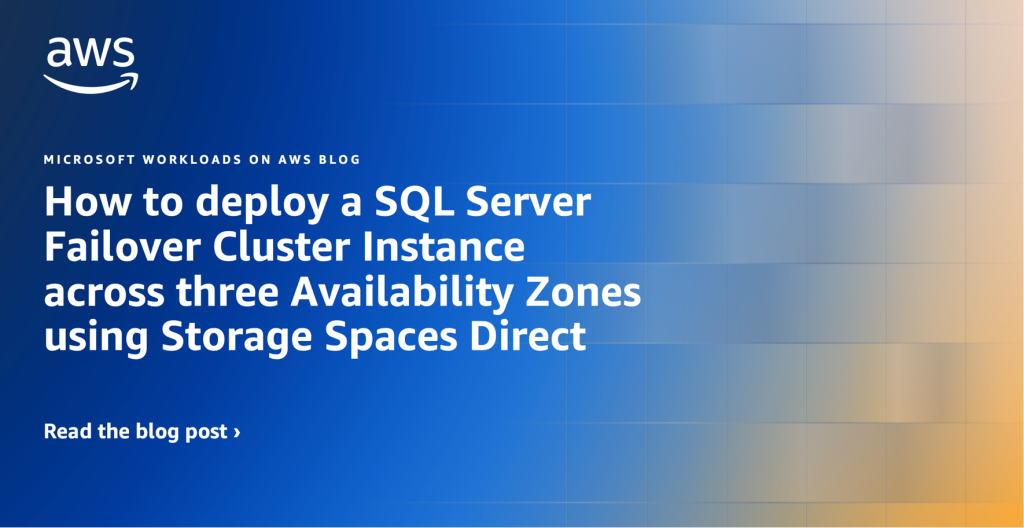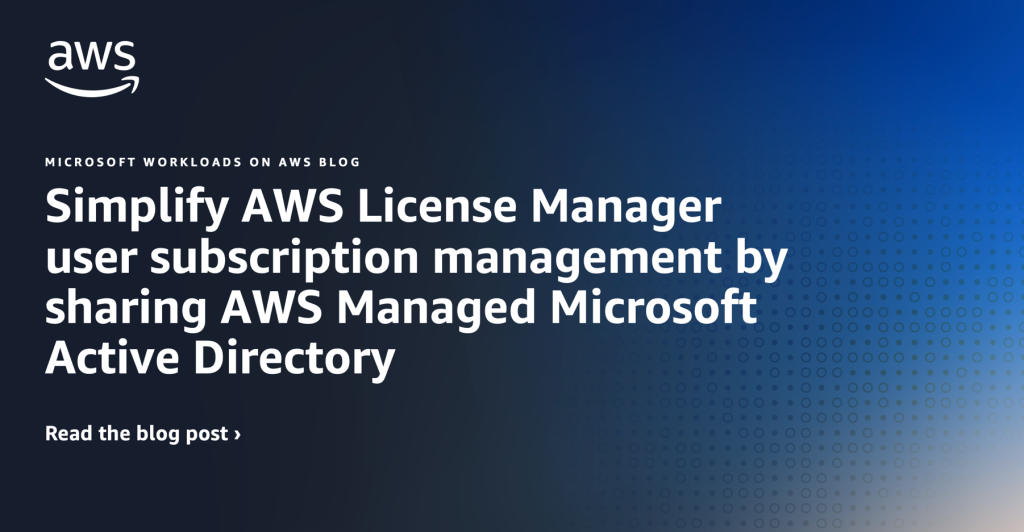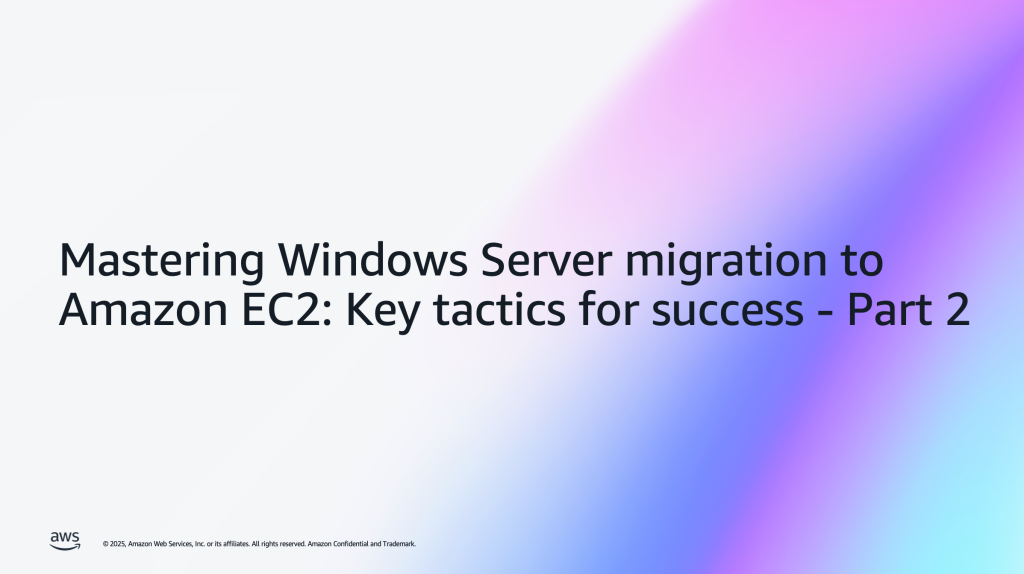Microsoft Workloads on AWS
Category: Amazon EC2
Reduce Microsoft SQL Server High Availability costs running on Amazon EC2
AWS has helped hundreds of thousands of customers transition their SQL Server workloads to the cloud since 2008, longer than any other cloud provider. Running business-critical applications often requires Microsoft SQL Server databases to be highly available. Customers choosing to use SQL Server for their mission-critical workloads can achieve high availability by deploying SQL Server […]
Mastering SQL Server Backups with T-SQL Snapshots and Amazon FSx for NetApp ONTAP
In this blog post, we will guide you through the process on performing a snapshot backup using native T-SQL based backup abilities and snapshot technology of Amazon FSx for NetApp ONTAP (FSxN). This method provide near-instant, consistent backups with negligible I/O, storage and compute capacity impact unlike traditional Microsoft SQL Server backups. Introduction Microsoft SQL […]
How to deploy a SQL Server Failover Cluster Instance across three Availability Zones using Storage Spaces Direct
In this blog, we’ll demonstrate how to architect and implement a high-availability Windows Server Failover Cluster (WSFC) with SQL Server using Amazon Elastic Compute Cloud (Amazon EC2) and Amazon Elastic Block Storage (Amazon EBS) across three Availability Zones (AZs). This approach transcends the traditional two-AZ limitations of Amazon FSx and one-AZ limitation of EBS multi-attach. […]
Simplify AWS License Manager user subscription management by sharing AWS Managed Microsoft Active Directory
In this blog, we’re going to show you how AWS License Manager can leverage the directory sharing feature available from AWS Directory Services for AWS Managed Microsoft Active Directory (AWS Managed Microsoft AD) to centrally manage user subscriptions services while using multiple Amazon Web Services (AWS) accounts. AWS License Manager offers you user-based subscriptions for […]
Optimize CPUs best practices for SQL Server workloads – continued
In this blog post, we will extend the analysis of the Optimize CPUs feature provided in a previous publication to other Amazon Elastic Compute Cloud (Amazon EC2) instances suitable for deployment of Microsoft SQL Server workloads on the Amazon Web Services (AWS) Cloud. Amazon EC2 now allows customers to modify an instance’s CPU options to […]
Mastering Windows Server migration to Amazon EC2: Key tactics for success – Part 2
Introduction This two-part series equips you with essential knowledge for a successful Windows Server migration to Amazon Elastic Compute Cloud (Amazon EC2). Part 1 laid the groundwork by exploring critical licensing decisions and Active Directory integration strategies. Building on that foundation, this post delves into the technical intricacies of preparing your Windows Server instances for […]
Extending on-premises MS SQL Server Always On Availability groups to Amazon EC2 for Disaster Recovery
This post shows how to implement a hybrid disaster recovery solution by extending your on-premises Microsoft SQL Server Always On Availability Group (AOAG) to SQL Server on Amazon Elastic Compute Cloud (Amazon EC2). Introduction Many Organizations need cloud-based disaster recovery solutions that maintain critical on-premises operations while minimizing costs. This post demonstrates how to extend […]
How TEKsystems Modernized a University’s Microsoft Workloads on AWS
In this blog post, we will describe how TEKsystems Global Services (TGS) worked with a university to modernize their legacy .NET Framework 3.5 applications to .NET 8 based microservices and Microsoft SQL Server (SQL Server) to Amazon Aurora PostgreSQL (Aurora PostgreSQL). TGS is an Amazon Web Services (AWS) premier tier services partner leading digital transformation […]
Operating BYOL Windows Server Workloads Effectively on AWS
One way that customers running Microsoft Workloads on Amazon Web Services (AWS) may reduce costs is taking advantage of Bring Your Own License (BYOL) for eligible licenses they own. In this blog post, we are going to share a few practices to help you optimize your operation of BYOL Windows Server workloads on AWS. Introduction […]
Automating SQL Server Point-in-Time Recovery Using EBS Snapshots
This blog post introduces a new AWS feature that enables point-in-time recovery for SQL Server using EBS snapshots. It offers a detailed walkthrough for creating VSS-integrated snapshots and restoring SQL Server databases using EBS snapshots to simplify database backups and automate point-in-time restore. Introduction Amazon Web Services (AWS) recently introduced support for restoring Microsoft SQL […]









